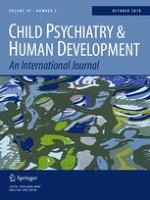20-02-2018 | Original Article
Temperament Moderators of Prospective Associations Between Community Violence Exposure and Urban African American Adolescents’ Aggressive Behavior
Gepubliceerd in: Child Psychiatry & Human Development | Uitgave 5/2018
Log in om toegang te krijgenAbstract
Research suggests that neighborhood risks are associated with internalizing symptoms for adolescents high on temperament characteristics related to the behavioral inhibition system (BIS). However, it is unclear whether newer conceptualizations of the BIS distinguishing fear from anxiety operate similarly. Furthermore, it is unclear whether the BIS attenuates community violence exposure effects on externalizing problems. The current study examined whether the BIS or the fight-flight-freeze system (FFFS) moderated associations between community violence exposure and internalizing and externalizing problems. Participants were 367 urban African American adolescents who reported on temperament characteristics in grade 9, and community violence exposure and adjustment problems in grades 9 and 10. Hierarchical linear regression analyses indicated that the FFFS, but not the BIS, moderated the association between community violence exposure and aggressive behavior. Grade 9 community violence exposure was positively associated with grade 10 aggression for adolescents low on FFFS, suggesting that the FFFS may partly differentiate community violence-exposed adolescents’ aggressive behavior.
